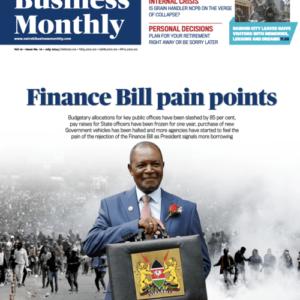By David Wanjala
The global second wave of Covid-19 is vicious. It is defying scientific statistics that had been gathered in the first wave, which were informing interventions. It is now no longer about age or pre-existing conditions. It is roping in the young and the healthy, lots that were initially thought to be beyond its reach.
Globally, Europe is bleeding once again. There’s no respite. UK, France among other countries have began closing down some of their cities again, amidst resistance from the masses. The USA, showing unprecedented numbers of infections and hospitalisation will definitely follow suit after they are done with their chaotic presidential election
Download Nairobi Business Monthly Latest Edition
As at the time of going to press, on November 3, Kenya’s numbers stood at 56,601 confirmed cases, 37,442 recoveries and 1,027 deaths. Numbers of confirmed cases are soaring every sunrise notwithstanding that testing is not adequate.
This comes hardly weeks after Government had eased the tough restrictions that had initially been imposed in effort to curb the spread of the virus but which had devastated the economy and almost brought it to its knees.
Were testing to be ramped up, it would devastate the nation the extent to which we are infected. It is becoming more complicated with the rising numbers of infection in schools, which might scuttle Government’s planned total reopening.
To test the waters, Government had allowed grade four pupils, KCPE and KCSE candidates to resume, to be followed with the rest depending on the response. This now seems unlikely with soaring numbers of infections in the schools. On November 3, for instance, 60 people including 52 students, six teachers and two workers out of a random sample of 100 from a school in Busia County tested positive. Community infections are also surging, according to Ministry of Health updates.
Should the second wave force re-imposition of the strict physical distancing rules that will again force people to stay indoors, the effect on the economy will be catastrophic. The first restrictions found people stable, so to speak. Save for the shock, people had at least some savings that kept them going as they pondered their second move, mostly relocating upcountry. Employers paid for at least a month or two before they resorted to putting their stuff on half pay, compulsory leave or closed altogether.
It is different today. Individuals, businesses and institutions have already expended whatever savings they had and are only beginning to pick up. It is sickening what the effects of a lockdown, however desirable, would be to the economy and by extension, to individuals.


